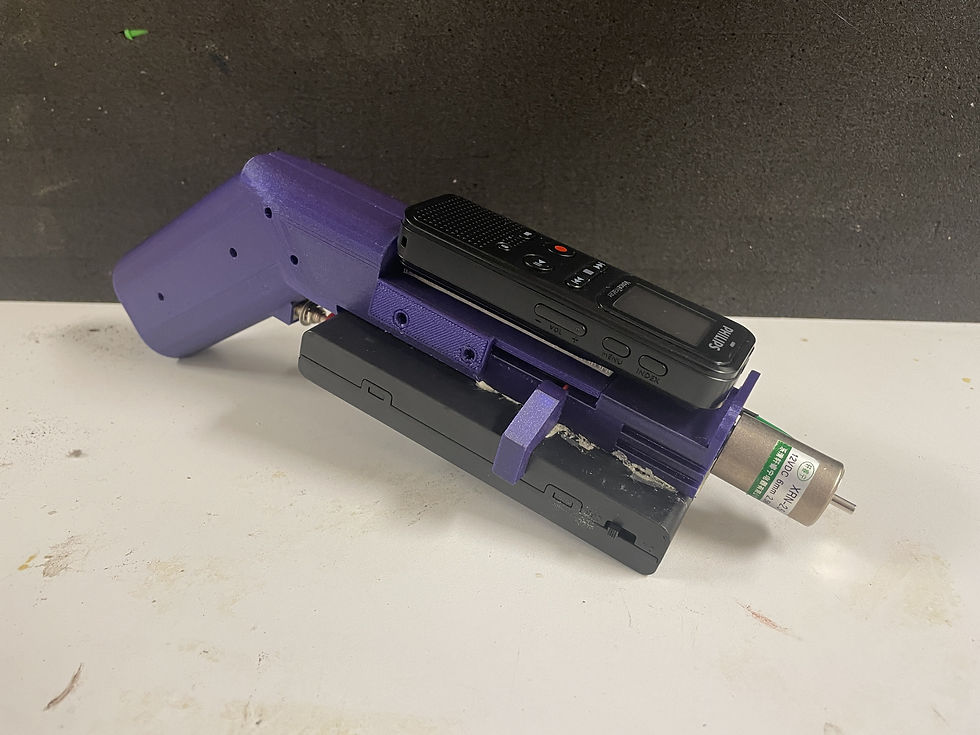Blog #5
- James Valentine
- Feb 3, 2024
- 2 min read
Over the winter, from December to current, the team focused on producing a functional physical prototype. The CAD files made during the academic semester were first amended and made to be 3d printer friendly, with the latter done by separating the original proposed casing into three main parts to accommodate size constraints. After the casing parts were printed, it was then assembled along with the battery, solenoid, resistors, and button switch, with the wirings soldered together and tucked within the wire channels of the casing. With the prototype functional as of the 3rd of February, the team is now also working on the project's digital part, the MATLAB application.
For near-term work, the team is planning on refining the prototype and working on the MATLAB application for parsing data. Working on the prototype mostly entails working on ways to secure the pieces together. Originally, a set of bolts was used to secure the pieces together, but the 3D printer used to make the prototype couldn’t print threads for them. Other methods of securing pieces together currently include adhesives and Velcro strips. The MATLAB application, meanwhile, needs to be programmed. Since block diagrams for the code are already made, this task will primarily just be following that.
Since the team's main objective for the month of February will revolve around the development and refinement of the application for the second phase of the final solution, it’s important to anticipate potential challenges that may arise. The team's primary challenge lies in the time constraint associated with this task. Coding inherently involves numerous trials and errors before achieving an accurate final result. Consequently, a significant amount of time will be dedicated to reviewing complex code to ensure precision and correctness. To address this challenge, the group is proactively staying ahead of the issues. Having dedicated the previous semester to researching various machine learning methods, we’ve already formulated a clear vision of our desired approach and application functionality. Furthermore, we’ve established foundational components within our code, such as the starting button and data input, serving as starting points. In terms of coordination, the team has utilized When2Meet to schedule dedicated meeting days for our team to work together and collectively advance the application development process.







Comments